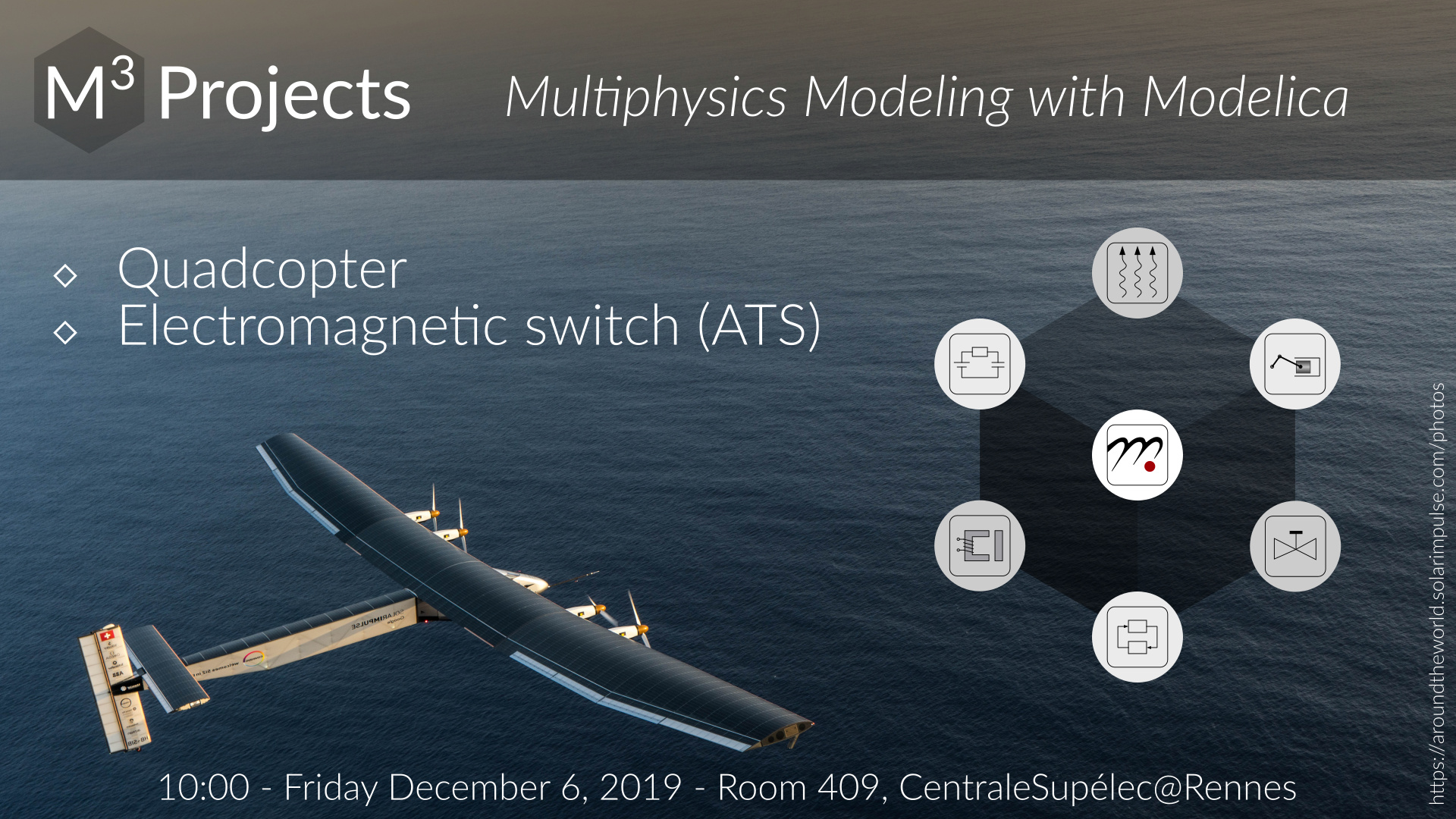Modeling project
You are a group of consultants who participates in a call for proposals for the development of models of physical systems.
The deadline is Friday, January 24, 2020 at 13:15, the date on which you will present and demonstrate your proposed model.

Objectives and evaluation criteria
Evaluation criteria sheet
Please start by reading carefully the criteria on the sheet
Project_eval_criteria.pdf
(2 pages).
Then, to help you understand the structure of the Modelica package you are expected to create, you can take inspiration from the example project:
Evaluation grid
During the project presentations, all the audience will fill in an evaluation grid which gives numerical values to the criteria detailed in the objectives sheet. This is a peer assessment activity.
Here is the blank evaluation spreadsheet:
Eval_grid.xlsx
(for information purpose, not for editing).
To make it easier to collect the evaluation grids filled by each evaluator,
you must edit the files inside the shared folder on Teams “Grilles eval projet Modelica 2019”.
It contains one grid for each evaluator (Grid_NAME.xlsx).
Each file contains one sheet per project.
Choice of system to model
You will develop a Modelica model of a system within this list:
Each subject has some specific modeling objectives, but the shared idea is the multiphysics aspect and the presence of several sub-components.
I suggest you work on these systems, because they seemed to me interesting and of a reasonable complexity (i.e. neither trivial nor overwhelmingly complicated). In addition, they are well suited for component-based modeling, which is at the heart of Modelica. However, I am open to alternative subjects that meet these same criteria.
Project presentation
All projects are evaluated during one dedicated session. Each group presents its model in front of the other groups, the course teacher(s) and possible external guests. Here is the “storyline” on which the session is based:
The model development team (= the presenters) comes in front of its client (= the audience) to showcase its freshly developed product (= the Modelica model). At the end of the presentation, the client should be convinced that the modeling team fulfilled its objectives so that it can pay the bill (= give a good grade!).
In particular, a convincing presentation should include the following two steps:
Introductory presentation: overview of the model and the package, how to use it, and some key simulation results. This talk should explain the audience in max. 5 to 10 minutes how the evaluation criteria are met: soundness of the architecture, ease of use by third parties, documentation… (cf. criteria detailed above + remark 2).
Commissioning of the model: each member of the audience has the opportunity to get the package on its own computer to evaluate it: judge the code and its documentation, run simulations… In about 15 minutes, the audience should be convinced that the promises made in the talk are fulfilled.
Remark 1: the introductory talk should be well organized, so that it may be helpful to have a few slides (although slides are not required).
Remark 2: the introductory talk should explain how the work was distributed among team members. Although this would not interest a genuine consultants’ client, it does greatly interest the teacher in connection with “Teamwork” objective of the project.
Remark 3: for the commissioning to work without hiccups or any incidents, it may be helpful to rehearse the demo with a person independent of the project. In particular, the access rights to the Gitlab project should allow cloning, the package should load in OpenModelica and models should simulate without errors.